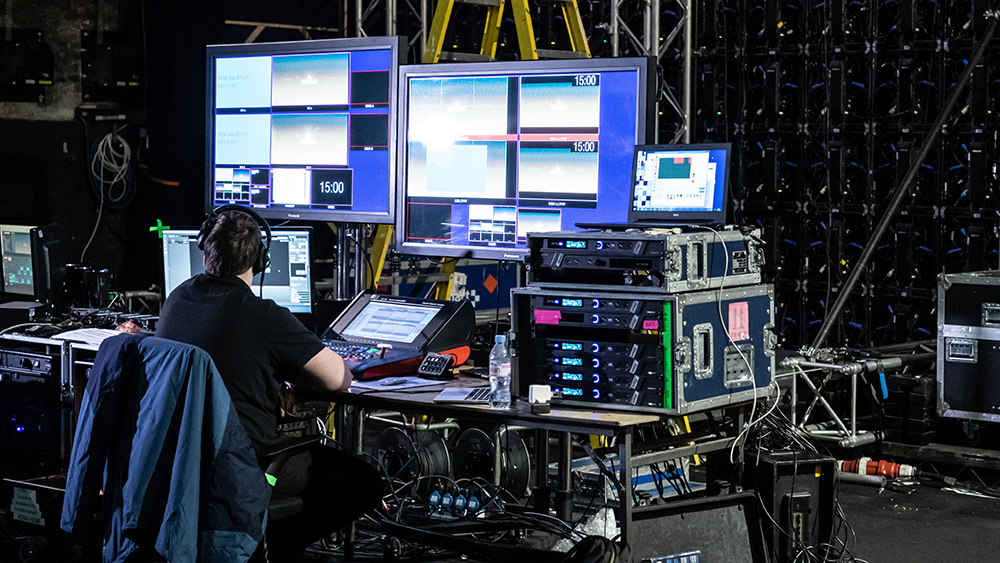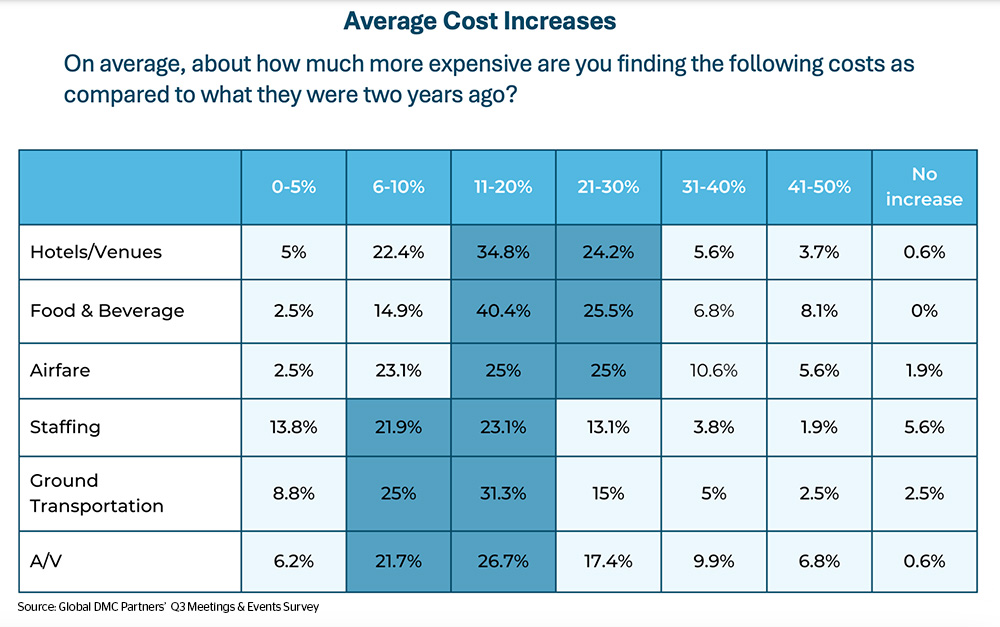
A little over a quarter of respondents to Global DMC Partners’ Q3 Meetings & Events Survey said AV costs have risen 11-30 percent in the last two years.
The biggest and most stubborn challenge for event organizers continues to be rising costs, according to Global DMC Partners’ (GDP) most recent Q3 Meetings & Events Survey. GDP, a global network of independent destination management companies (DMCs) and specialized event service providers, surveyed 164 meeting and event professionals from late June to early August, the majority of whom are based in the U.S. and Canada, with 20 percent located in the U.K. and Europe.
In addition to a varied pool of respondents — 37 percent were corporate/direct planners, two out of five were agency/third-party planners, and nearly one-quarter were association and independent meeting planners — the survey questions covered a good amount of ground, including budgets, cost management strategies, lead times, diversity, equity, and inclusion efforts, adoption of AI tools, and sustainability practices. We recently wrote about the sustainability responses for our Climate Monthly newsletter.
1. ‘A Perfect Storm’ — “Rising costs have been a persistent issue since late 2022, and our latest survey reveals that higher accommodation, F&B, and AV rates are among the top challenges for today’s planners,” Global DMC Partners President and CEO Catherine Chaulet told Convene via email.
The majority of planner respondents said that costs have risen by 10-30 percent on average across those categories, in addition to higher airfares and ground transportation, compared to two years ago. “Planners are facing a perfect storm of increased costs and inflationary pressures. This leaves little room for innovation without significantly adjusting budgets. Even with a 10- to 20-percent rise in budgets, it’s not enough. Planners are still forced to make tough decisions — reducing program elements, shortening event durations, and seeking early contracting opportunities.”
Other strategies to reduce costs include building in more leisure time, consolidating or reducing the number of programs annually, cutting back on AV, and reusing event décor and materials across multiple programs (bonus points for that move, which not only reduces costs but is a more sustainable approach).
For two out of five planners, changing an in-person program to virtual to scale back on costs is completely out of the question; three out of 10 would rarely consider such a move; and 23 percent said it is sometimes an option.
While higher costs continue to be the No. 1 challenge for the past two years, the top five challenges are consistent among U.S./Canadian and international respondents, indicating these challenges are universally felt:
2. Finding availability
3. Budget management
4. Timely approval from decision-makers
5. Contract negotiations
 Here’s a look at other insights from the survey.
Here’s a look at other insights from the survey.
Lead times — More than one-quarter of respondents reported planning events 10 months to a year in advance, which is up from 15 percent in the previous (Q2) survey, indicating that lead times may be improving. However, nearly one-quarter still plan only four to six months out, a slight drop from 29 percent previously.
DEI — Despite a trend among a growing number of corporations to put DEI initiatives on the back burner, DEI and accessibility remain important to event organizers. Eighteen percent incorporate efforts in every program they organize and more than one-quarter in most of their programs. It’s even prioritized over wellness initiatives, with only 4 percent baking wellness into all of their programs and 18 percent into most of them. The most frequently reported effort to implement DEI and accessibility measures? Asking about special accommodation needs during registration, which 64 percent of planners said they do all the time. Two out of five planners book accessible venues all the time and 37 percent most of the time.
AI, of course — “Another emerging trend is the increased adoption of AI, with nearly half of planners using tools like ChatGPT and Microsoft CoPilot,” Chaulet said. Of those who use gen AI, 84 percent use chatbots; 44 percent use grammar checkers and rewording tools like Grammarly and Wordtune; 15 percent use content-creation tools, including Jasper and copy.ai; 12 percent use image generation (DALL-E 2 and Midjourney); 10 percent use note takers (e.g., Fathom and Fireflies); and 9 percent use video-creation tools like Descript, Opus, and Visla.
“The rise of AI in our industry is game-changing,” Chaulet said. “It allows planners to streamline processes and focus on creating memorable experiences, even amid budget constraints.”
Michelle Russell is editor in chief of Convene.
